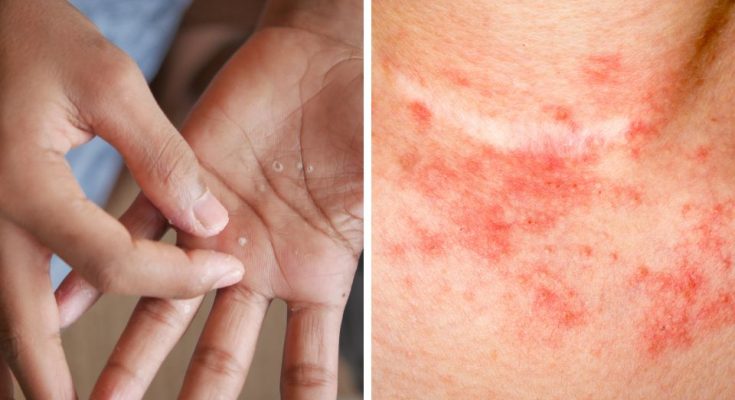Everyone eagerly anticipates spending time outside and taking advantage of the beautiful weather as summer draws near. But the season can be difficult for people with eczema, especially dyshidrotic eczema.
Little, itchy blisters on the tips of fingers, toes, palms, and soles are a common springtime flare-up for this kind of eczema.
Eczema cannot be healed, but it can be controlled, so you can enjoy the sun without worrying all the time.
Dermatitis, another name for eczema, is a disorder that results in skin irritation. About 35 million Americans suffer from it, making it a problem for millions of people in the country.
Although it usually first appears in children under five, eczema can persist until adulthood. A flare-up is characterized by swollen, red, and itchy skin along with fluid-filled pimples that may ooze and crust over.
Eczema is not communicable, however it can run in families. It is frequently brought on by an allergic reaction.
A particular kind of eczema called dyshidrotic eczema creates tiny, excruciatingly irritating blisters on the tips of fingers, toes, palms, and soles of the feet.
These blisters may take weeks to cure and are quite painful. The illness is more prone to flare up in the spring and is linked to seasonal allergens.

Several names are used to refer to dyshidrotic eczema, including:
- Pedopompholyx (affects the feet)
- Cheiropompholyx (affects the hands)
- Vesicular palmoplantar eczema
- Dyshidrosis
- Foot-and-hand eczema
- Dyshidrotic dermatitis
- Vesicular eczema
- Pompholyx
Dyshidrotic eczema symptoms include deep-set blisters on the hands and feet, intense itching, redness, flaking, pain and scaly, damaged skin.
This kind of eczema usually affects adults in their 20s to 40s and is more common in women than in males. Atopic dermatitis, hay fever, and contact dermatitis increase an individual’s risk.
Dyshidrotic eczema can run in families, thus the likelihood of you getting it increases if you have a family member who has it.
It’s crucial to get medical assistance if an infection develops because the problem can also become infected, which can postpone healing.
With the right care, dyshidrotic eczema can be controlled even though it cannot be cured.
In severe situations, corticosteroid injections, lotions, ointments, or pills may be necessary. Additional therapies consist of:
- UV light therapy
- Draining large blisters
- Antihistamines
- Anti-itch creams
- Immune-suppressing ointments like Protopic and Elidel
To assist manage dyshidrotic eczema, there are a few choices available for people who prefer natural remedies:
1. Cold Compresses: You can relieve pain and reduce inflammation by applying cold compresses to the affected area several times a day for 15 minutes each time. For optimal effects, use a moisturizer after.
2. Aloe Vera: The plant’s gel helps relieve irritated skin and hasten the healing process. Use a natural aloe vera lotion or apply the gel directly to the regions that are irritated.
3. Oatmeal: Oatmeal, which has anti-inflammatory qualities, can be applied topically to the skin to reduce symptoms and support skin health.
Effective management of dyshidrotic eczema begins with recognition and comprehension of the condition.
You can lessen flare-ups and enjoy the summer without having to deal with the discomfort of eczema with the right care and treatment.
You can manage your symptoms and maximize your time in the sun by being more knowledgeable about your condition.

